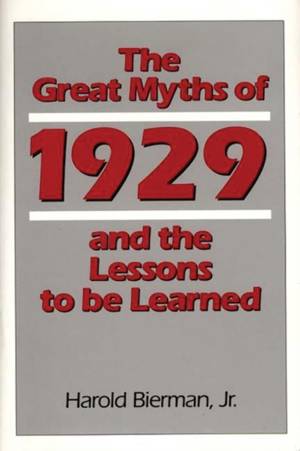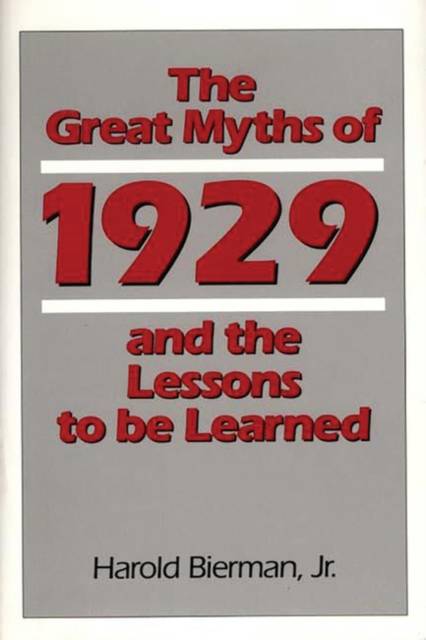
- Retrait gratuit dans votre magasin Club
- 7.000.000 titres dans notre catalogue
- Payer en toute sécurité
- Toujours un magasin près de chez vous
- Retrait gratuit dans votre magasin Club
- 7.000.0000 titres dans notre catalogue
- Payer en toute sécurité
- Toujours un magasin près de chez vous
Description
What actually was the economic situation in 1929 and what happened to the stock market? Harold Bierman's fresh look at the Crash of '29 provides provocative answers that challenge the facts and overturn previously held assumptions concerning the catastrophic events that led to ten years of economic depression and very likely created the fertile soil of despair and unrest that ultimately led to World War II. This cogent re-evaluation takes a different tack and arrives at a different set of conclusions than John Kenneth Galbraith's classic overview of the period, The Great Crash. Echoes of the great stock market price declines that ended ten years of the greatest prosperity the U.S. had ever experienced have continued to reverberate down the corridors of history. Bierman believes that a more complete understanding of these past events can enhance current market decisions; that by accurately assessing the stock market crash of 1929-1932, readers can better grasp the present market situation and more wisely forecast the future.
Arriving at drastically different conclusions from most widely read books on the subject, the 11-chapter study takes the position that the stock market was not unreasonably high in October of '29, asserting that, in fact, there was reason for optimism. Bierman presents sound explanations for the initial decline that are not dependent on the assumption of overvaluation. He also clarifies the vital distinction between speculation and investment and shows how President Herbert Hoover's war on speculation may have contributed to the crash and subsequent depression. The first chapter outlines seven commonly held myths regarding 1929. Other chapters compare the stock market and profitability of corporations; attempt to determine whether RCA stock was outrageously overpriced or merely a reasonably priced growth stock; and look at the 1931 banking system hearings. The Mitchell, Wiggin, and Insull affairs are all given new, fact-based twists. Final chapters examine margin buying, probability, and short selling, develop important perspectives on the crash of 1987, and extract valuable lessons to be learned. The book effectively refutes prior notions and replaces them with solidly built, readable explanations that are most relevant to history courses dealing with the period or courses on investment in common stock. Any general reader with an interest in early twentieth century history or in investment will find this a rewarding read.Spécifications
Parties prenantes
- Auteur(s) :
- Editeur:
Contenu
- Nombre de pages :
- 208
- Langue:
- Anglais
- Collection :
Caractéristiques
- EAN:
- 9780313273650
- Date de parution :
- 30-03-91
- Format:
- Livre relié
- Format numérique:
- Genaaid
- Dimensions :
- 140 mm x 216 mm
- Poids :
- 399 g

Les avis
Nous publions uniquement les avis qui respectent les conditions requises. Consultez nos conditions pour les avis.






